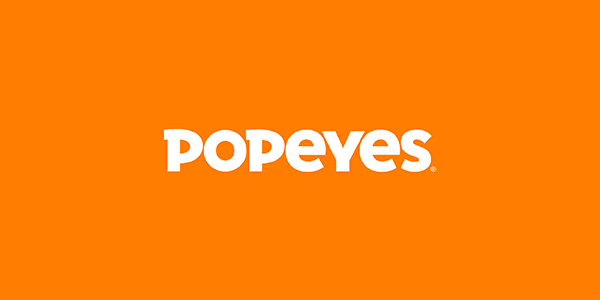What Is Connected TV Advertising? Benefits & How It Works

TL;DR: What Is CTV Advertising?
- CTV advertising is a type of programmatic advertising that delivers targeted video ads through internet-enabled devices like Rokus, Apple TVs, and gaming consoles.
- CTV advertising is rapidly growing with ad spend projected to reach $38.36 billion USD by 2026.
- CTV ads can be highly targeted, purchased programmatically, and include interactive elements to drive higher engagement and conversions.
- AI advancements and the rise of retail media are transforming CTV from an upper-funnel awareness tool into a performance-driven marketing channel.
- Increased ad-supported streaming options and live sports inventory present major opportunities to reach more engaged audiences.
With the rise of streaming services and internet-enabled devices, viewers are increasingly ditching traditional linear TV and watching their favourite shows, movies, and live sports on demand through connected TV (CTV).
According to EMARKETER, over 70% of the US population streams content through CTV devices, with 89.2% of US households expected to have access to CTV by 2026. Meanwhile, time spent with other over-the-top devices, such as desktop and laptop computers, is projected to decline by over three million viewers by 2029.
As a result, CTV ad spending is growing at a rapid pace and is projected to increase by 14.6%, reaching $38.36 billion USD in 2026.
With consumers cutting ties with cable and flocking to streaming in droves, CTV has emerged as an ideal channel for advertisers to reach a more engaged target audience.
Whether you’re new to CTV advertising or looking for an in-depth refresher on how it works, here’s everything you need to know about CTV and how to successfully integrate it into your omnichannel advertising strategy.
What Is Connected TV?
CTV refers to televisions that connect to the internet, either directly via built-in capabilities or through an external device, allowing viewers to stream live or on-demand video content from the comfort of their home. Examples of CTV include Smart TVs (e.g., Samsung, LG), streaming devices (such as Amazon Fire Stick, Apple TV, Roku, or Chromecast), and gaming consoles (like Xbox and PlayStation).
Unlike traditional linear TV, CTV allows viewers to access a wide range of video content through subscription-based or ad-supported streaming services like Netflix, Disney+, Max, Paramount+, Peacock, and Pluto TV. This flexibility provides advertisers with opportunities to target highly engaged audiences with more precision.
What Is Connected TV Advertising?
CTV advertising is a form of digital advertising that delivers targeted video ads within streaming content on internet-enabled TVs.
CTV inventory (also known as the available advertising space on streaming platforms) primarily involves video ads—similar to traditional commercials—that run before (pre-roll), during (mid-roll), or after (post-roll) programming. CTV ads can also take the form of interactive or non-linear ad formats, such as shoppable ads or dynamic overlays, which appear within or on top of streaming content to increase viewer engagement and conversions (more on that later).
With its data-driven targeting and more granular measurement, CTV advertising is helping to democratize television advertising. It allows everyone from small businesses (SMBs) to major brands to target audiences through premium channels and high-demand content that were previously inaccessible (like award-winning series, top-rated reality shows, and live events) at a lower cost and with less minimum ad spend than traditional linear TV advertising.
How Does CTV Advertising Work?
CTV advertising leverages automated, data-driven ad purchasing through programmatic buying to precisely target and engage viewers across streaming content. Here’s a simplified look at how the whole process works step-by-step:
Step 1: Content Selection and Ad Placement
It all starts with a viewer selecting something to watch, such as a movie, TV show, or live event, on a CTV device.
At the same time, the streaming platform automatically identifies available ad slots and shares relevant data (such as device type, content genre, and demographic or behavioural characteristics about the viewer) with an ad exchange, which facilitates real-time bidding among advertisers.
Step 2: Programmatic Buying and Bidding
An advertiser uses a demand-side platform (DSP) to purchase or bid on ad slots from the ad exchange through various types of programmatic deals, such as:
- Open auctions: Public, real-time bidding that’s open to all advertisers.
- Private marketplaces: Invite-only auctions that offer select inventory and more exclusive ad placements.
- Programmatic guaranteed: Fixed-price deals that provide premium ad placements with guaranteed impressions.
These deal structures streamline the ad-buying process by offering advertisers greater efficiency, control, and transparency than traditional linear TV ad buying.
Step 3: Ad Delivery
Once an advertiser secures or wins the ad placement, the ad is instantly served and seamlessly integrated into the viewer’s streaming experience, much like traditional TV commercials, but tailored precisely to the viewer’s profile and interests.
Step 4: Campaign Measurement and Optimization
From there, advertisers track real-time metrics, including impressions, video completion rates, and conversions (e.g., online purchases tracked via pixels, or store visits measured through cross-device attribution), which advertisers can analyze immediately to refine targeting strategies and further optimize campaign performance.
What’s the Difference Between CTV and Other TV Advertising Channels?
Understanding the differences between linear TV advertising and other streaming-based advertising options is essential to crafting the right CTV advertising strategy. Here’s what you need to know.
OTT vs. CTV Advertising
Over-the-top (OTT) refers to video content streamed on any device, like a desktop computer, smartphone, or Smart TV that’s connected to the internet. OTT gets its name because it bypasses traditional linear cable TV by streaming content online.
CTV is a subset of OTT. For example, if viewers watch Disney+ on their mobile device, they’re streaming OTT content. But if they watch it through an external device like a Google Chromecast or Amazon Fire TV Stick plugged into their TV, that would be considered CTV.
OTT advertising refers to any ad delivered directly to viewers over an internet-enabled device (like a computer or tablet), whereas CTV advertising refers to ads specifically targeted to viewers using a CTV device.
Because CTV content is often viewed on larger screens in a more relaxed environment, CTV ads are typically known for having higher ad recall and tolerance than OTT ads, which are often displayed on smaller mobile and desktop screens.
Traditional Linear TV vs. CTV Advertising
Linear TV refers to when a viewer watches TV programming as it airs live, typically through an antenna, cable, or satellite subscription.
The main difference between CTV advertising and traditional linear TV advertising is that CTV ads can be played before, during, or after the streaming of on-demand content. In contrast, linear TV ads are delivered live during the commercial breaks of traditional TV programming.
CTV advertising also allows for precise, niche targeting and is more affordable than linear TV campaigns. Traditional linear TV’s strength is that it delivers ads to a broad audience, but it’s more expensive overall.
Despite the number of CTV viewers in the US surpassing the number of linear TV viewers for the first time in 2024, linear TV still commands a sizable share of ad budgets due to its reach and familiarity. As a result, linear TV and CTV will account for nearly a fifth of total media ad spending in 2025, with advertisers increasingly planning their linear and CTV investments together to maximize audience reach and campaign effectiveness.
Addressable TV vs. CTV Advertising
CTV refers to the devices used to stream content over the internet. Addressable TV, on the other hand, is a method of delivering targeted, personalized ads to specific households or audience segments, even if they’re watching the same TV show.
CTV advertising can leverage the targeting capabilities of addressable TV, but addressable TV isn’t limited to just CTV devices. Advertisers can also serve ads through cable, satellite, and internet protocol television delivery systems and set-top boxes.
What Are the Benefits of Connected TV Advertising?
CTV advertising combines the precision of digital advertising with the high-res, high-impact power of traditional linear TV advertising. It allows advertisers to target the right audience at the right time and moment, captivating customers when they’re the most receptive: watching TV in the comfort of their homes.
Here are five of the main benefits of CTV advertising:
1. CTV Offers Enhanced Targeting Capabilities
CTV ads are sold as impressions, similar to programmatic video or display ads sold through a DSP. This means you can apply similar strategies using 1st-party data, 3rd-party segments, and lookalike audiences to target ads based on user behaviour, audience demographics, geographic location, and more, reaching the right audiences and wasting less ad spend.
2. CTV Can Be Leveraged for Retargeting
CTV ads utilize pixels or software embedded within an ad or app to capture device information and user behaviour when a viewer engages with an ad. This data can enable cross-device retargeting, allowing advertisers to deliver personalized ads to customers’ smartphones and computers, enhancing conversions and brand engagement.
3. CTV Provides Real-Time Optimization and Measurement
With traditional linear TV ads, you’d often need to wait weeks, if not months, to receive performance reports and know how a campaign performed. With CTV, you can access real-time reporting and metrics like impressions, CPMs, and view-through conversions, making it easier to track campaign performance and optimize it on the fly.
4. CTV Enables More Holistic Campaigns
Research shows that 84% of US adults report browsing the internet on a separate device, such as a smartphone, tablet, or computer, while watching TV. Incorporating CTV into your existing multi-channel strategy can help you get better campaign results and increase the likelihood of a conversion by capturing your audience’s attention wherever they are online.
5. CTV Has Increased Viewer Engagement
CTV is commonly known to offer higher levels of viewer engagement compared to traditional linear TV ads. CTV ads are less skippable, broadcast in high-definition, like 4K and 21:9 widescreen, and provide more interactive ad formats. This often leads to higher completion rates and longer viewing times than traditional linear TV ads.
What Are Some Types of CTV Ad Formats, Targeting, and Metrics?
CTV offers the targeting, measurement, and flexible ad formats of digital advertising, giving advertisers real-time insights and the flexibility to create highly-targeted campaigns without losing the benefits of traditional linear TV campaigns.
CTV Ad Formats
CTV offers advertisers multiple formats to engage viewers effectively across streaming content. Here are some of the most common CTV ad formats advertisers can leverage:
- In-stream ads: Pre-roll, mid-roll, and post-roll video ads play before, during, or after streaming content. Similar to traditional TV ads, these ads usually appear between episodes or scenes of a TV show or movie.
- Non-linear ads: Also known as overlay ads, non-linear ads are static images, text, videos, or animations displayed alongside or on top of content without pausing or interrupting it.
- Companion ads: These ads are served alongside or surrounding content. They often appear as text, images, rich media, or skins. Companion ads provide consistent visibility by surrounding video content without interrupting the TV viewing experience.
- Shoppable ads: An emerging ad format in CTV, shoppable ads allow viewers to directly purchase featured products from within the streaming content itself, typically through clickable product icons, QR codes, or “shop now” buttons that appear as overlays during ads.
CTV Measurement
CTV provides the types of granular reporting and measurement that advertisers could never previously access with traditional linear TV campaigns. Here are some CTV metrics that can help you measure the effectiveness of your campaigns:
- Impressions: This metric tracks how many times viewers see your CTV ads, helping you understand the scale and reach of your CTV campaigns.
- Watch Time and Video Completion Rate: These metrics measure the average number of seconds viewers watch a CTV ad and how many viewers watch it to the end. They provide insights into how engaging your content is.
- Cost Per Completed View (CPCV): This metric measures how much of your campaign’s budget is spent on each ad watched by a viewer from start to finish.
- Return On Ad Spend (ROAS): This metric measures the revenue earned for every dollar spent on CTV advertising, helping you understand the effectiveness and profitability of your CTV campaigns.
- View-Through Conversions: This metric measures how many viewers converted (for example, made a purchase) after viewing an ad. It gives you a holistic view of how campaigns are performing, helping you measure the true return on advertising spend and providing a baseline to help improve future CTV campaigns.
Additionally, marketers can use footfall attribution to measure how effectively their CTV ads drive customers to visit physical store locations, directly linking online ad exposure to offline activity.
CTV Targeting Capabilities
CTV provides more precise household targeting than traditional linear TV advertising, allowing advertisers to deliver personalized messages, optimize campaign performance, and reach the right audience more efficiently.
Here are some key targeting methods advertisers can use with their CTV campaigns:
- First-party targeting: Use data collected through form submissions, in-store visits, previous purchases, and 1st-party cookies to target households directly using hard data like their IP addresses and device IDs, if a platform provides them.
- Location targeting: Leverage 1st-party data to target CTV ads to viewers based on their geographic location by country, state, city, or zip/postal code.
- Platform and Device targeting: Target specific CTV platforms and devices like Roku, Fire TV, Apple TV, and more.
- Demographic targeting: Leverage 1st and 3rd-party data to target audiences based on viewer demographics like age, income, and household size.
- Contextual and Interest-based targeting: Deliver hyper-relevant ads based on the types of content their viewers consume by targeting specific genres, viewing times, and keywords.
- Lookalike targeting: Find common characteristics shared between existing customers in 1st- and 3rd-party data and use lookalike targeting to find potential customers who share those similarities. This helps advertisers expand the reach and profitability of their campaigns.
- Retargeting: Use retargeting to re-engage and convert viewers who have already shown interest in a brand or product—for example, by visiting a website, making a purchase, or watching a CTV ad in full—and serving an ad again in the hopes of a conversion.
Connected TV Advertising Best Practices
Now that we’ve explained the features, benefits, and advantages of CTV advertising, let’s go over some of the best practices, strategies, and tips that can help you get the most out of your CTV campaigns.
1. Use CTV as Part of a Multi-Channel Strategy
CTV advertising should act as a complement to your existing multi-channel strategy, not a replacement for it.
Use CTV to retarget potential customers, tell a different side of your brand story, get in front of viewers on different devices, and push viewers further down the funnel.
For example, performance marketing agency ThomasARTS used CTV, video, and display ads as part of a multi-channel strategy to gain incremental reach by over 50,000 users and drive qualified leads further down the funnel for one of the most trusted banks in the Western United States.
2. Get Creative With Your CTV Ads
The more ad creatives you have, the more opportunities you have to optimize your campaigns.
Once you have the visuals, storyline, and call to action planned, experiment with different ad lengths, imagery, and copy to target different audiences with more personalized ads and figure out which variations work best.
Need some inspiration? Check out these expert-designed CTV ad examples from our in-house Creative Studio team.
3. Reduce Ad Fatigue With Frequency Capping
We’ve all been there: you start streaming a show, and every time you reach a commercial break, you’re greeted with the same ad again and again.
There’s an adage in marketing that a customer needs to encounter an advertiser’s message seven times before it starts to stick. But ad fatigue can force viewers to stop paying attention after seeing an ad only a few times.
Use frequency capping to ensure your ads reach unique audiences and aren’t shown to the same viewers repeatedly.
4. Use CTV to Boost Brand Awareness and Gauge Brand Recall
CTV is an ideal channel for increasing top-of-funnel awareness and measuring campaign performance from a single platform.
For example, StackAdapt customer Add3Connect leveraged 1st-party and 3rd-party segments to target CTV ads directly to customers interested in supplements and healthcare products for their client, Nuun. Then, they used StackAdapt’s in-platform brand lift studies to measure ad and brand recall, improving relative lift by +18.7%.
5. Target the Right Audiences
Whether you need to ensure compliance or want to target a specific customer at a particular time of day, use a programmatic CTV advertising platform like StackAdapt to ensure you’re reaching the right audience and getting the most out of your ad spending.
6. Get Interactive
Thanks to the functionality of devices like Apple TV and Roku remotes, viewers can now click on and interact with in-stream ads. This allows them to perform tasks such as entering their email address, quickly scanning a QR code, or being redirected to a website—either on their phone or the CTV device itself—to learn more about a product.
Although still in their infancy, interactive CTV ads will undoubtedly help advertisers increase conversions as the technology continues to develop.
Connected TV Statistics
By now, you probably understand the benefits of using CTV advertising in your programmatic campaigns. But let’s wrap up with a few more noteworthy CTV stats that show where it’s headed, how it’s evolving, and why it needs to be part of your next marketing campaign.
- CTV advertising has been shown to command higher attention than video and display advertising.
- Good news for advertisers who rely on retargeting: 69% of consumers say they won’t skip an ad if it’s for a product or service they’re already interested in.
- CTV usage amongst younger generations is constantly increasing, with EMARKETER reporting that millennials represent the biggest share of CTV users in the US (63.4 million), followed by Gen Z (54.4 million).
- According to EMARKETER, US adults will spend more time watching CTV than traditional linear TV for the first time ever in 2025, watching 2 hours and 35 minutes on average per day.
- A survey by the Interactive Advertising Bureau (IAB) found that 84% of advertisers believe CTV delivers better targeting capabilities than traditional linear TV.
What’s Next for Connected TV Advertising?
CTV advertising is evolving rapidly. Driven by advancements in technology and shifting viewer behaviours, the way marketers plan, execute, and measure CTV campaigns is constantly changing.
Here’s a look at some of key trends shaping the future of CTV advertising, and how marketers can leverage them to drive even better results:
CTV Enters Its AI Era
AI and machine learning are impacting all aspects of modern digital marketing. Although generative AI’s fails often get an unfair amount of attention, the next phase of AI adoption in CTV will focus heavily on campaign planning, audience targeting, creative personalization, and reporting—areas that are uniquely positioned to benefit from deeper, predictive insights.
In practical terms, this means marketers will increasingly rely on AI-driven insights to predict viewer preferences and deliver the right creative at precisely the right moment, helping advertisers refine their targeting and significantly reducing wasted ad spend.
Looking ahead, AI will help marketers optimize campaigns in real time, identify the right target audience, deliver tailored messaging, and uncover performance insights with a higher level of precision than previously possible, leading to more relevant ad experiences for viewers and stronger ROI for brands.
CTV Moves Down the Funnel
CTV advertising has historically been used as an upper-funnel tactic for increasing brand awareness. But the rise of retail media networks and recent technological advancements are transforming CTV into a performance marketing channel.
According to the IAB, over a third of US ad buyers plan to invest in shoppable ads more in 2025, and a separate study found that 45% of US consumer packaged goods brand marketers predict it’s the next frontier in retail media.
Shoppable ads allow direct, in-stream purchasing. But they’re not the only interactive ad format that can drive results. Pause ads, which trigger ads when viewers pause their content, are gaining traction across CTV, with 51% of viewers reportedly taking action after viewing one.
These innovations—along with more traditional formats, like QR codes—are reshaping CTV’s role in the funnel by providing viewers with a clearer path to purchase.
Ad-Supported Streaming Continues to Rise
Despite the rise of subscription-based streaming services, free ad-supported television (FAST) remains a popular option.
In the past year, 55% of viewers used FAST platforms like Amazon’s Freevee, the Roku Channel, and Tubi to stream television. This growth is expected to continue, with EMARKETER forecasting that the number of FAST viewers in the US will grow 10.96% and reach 129.6 million by 2029.
Meanwhile, top streamers like Netflix, Paramount+, and Disney+ are also experimenting with ad-supported video-on-demand tiers that are cheaper than traditional subscription-based video-on-demand services.
With higher ad loads per hour and more viewers shifting to ad-supported platforms due to subscription fatigue and other cost considerations, marketers will have increasing opportunities to deliver targeted ads at scale.
Live Sports Goes Programmatic
Four or five years ago, it was nearly impossible for advertisers to access live sports inventory through programmatic advertising.
These days, with viewers increasingly cutting the cord with cable and migrating to streaming platforms, publishers are opening premium live sports inventory to programmatic buying.
In 2024, NBCUniversal made Olympics inventory biddable for the very first time, and platforms like StackAdapt are increasingly gaining access to live sports inventory—from the FIFA World Cup to Sunday Night Football—and other types of tentpole programming.
With 127.4 million US viewers projected to stream sports regularly in 2027, the opportunity for increased reach and higher viewer engagement has never been greater.
Bring the Power of CTV to Your Advertising Strategy
CTV is quickly becoming an essential part of a successful marketing strategy, offering precise targeting, real-time optimization, and measurable results at the click of a button.
Ready to take your digital marketing campaigns to the next level? StackAdapt can help you seamlessly integrate CTV advertising into your media mix and achieve better performance across every channel.
Speak with our team to learn more about StackAdapt’s CTV advertising platform.
CTV Advertising FAQs
CTV advertising costs vary based on the type of marketplace you buy through. In 2024, the Association of National Advertisers reported that the average CPM for CTV was $12.90 USD. But costs can differ significantly by placement type. Private marketplace CPMs averaged $15 USD, while open-market placements averaged around $5.54 USD.
CTV advertising is typically purchased through programmatic platforms like StackAdapt, which provide precise targeting, detailed campaign measurement, and real-time optimization to improve performance. To learn more, speak with our team.
CTV advertising is ideal for both brand awareness and performance-driven campaigns, serving businesses of all sizes—from SMBs to enterprise brands—across industries like retail, finance, healthcare, and more.











